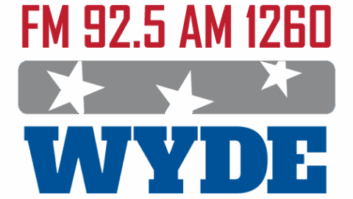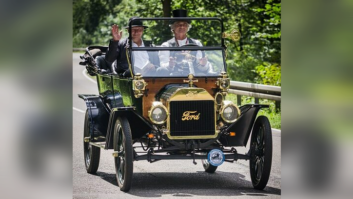Italy has been at the forefront of digital radio adoption in Europe for two decades, with three national and several local DAB+ multiplexes on the air today.

Approximately 83% of the Italian population can receive DAB+ broadcasts today, with well over 150 different transmission sites from the three national broadcasters. These networks stretch from the northern border south through Italy’s famous boot-shaped peninsula — with some networks extending into Sicily and Sardinia.
EVOLUTION
Of the three national services, DAB Italia has perhaps the most interesting history. The network operator, owned by private radio service providers, launched its initial tests in Northern Italy in 1998, and was actively involved in regulatory development for the emerging medium. Those developments stretched into the second decade of the new century, resulting in DAB Italia’s 2012 commercial launch.
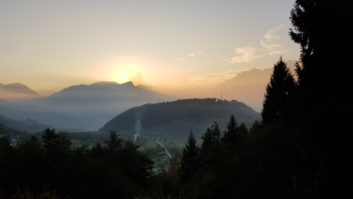
The technology has continued to evolve and change in those ensuing 13 years — changes that brought new challenges and benefits. Notably, the introduction of a second-generation audio codec in 2007 shifted testing from DAB to DAB+ due to the enhanced service and quality capabilities that the latter offered.
“The launch of the MPEG-4 AAC+ Version 2 codec presented us with a more efficient audio encoding standard,” said Hanns Wolter, technical director, DAB Italia.
“The previous MPEG-1 Layer II standard limited us to around 10 DAB radio services for each multiplex. The second-generation standard doubled that capacity while also reducing the associated transmission costs. It was an important development in efficiency that has allowed us to protect our investments over many years.”
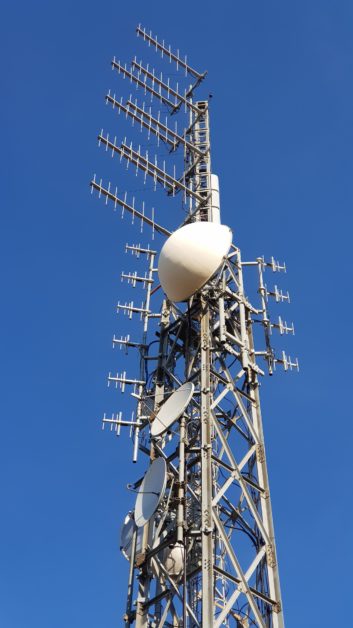
Naturally, as with any early digital radio service, there weren’t many possibilities of reaching an audience. “There were no DAB+ receivers in 2007,” he said.
“It took us at least four months to procure a DAB+ receiver for our own tests, and we could only verify the operation with test equipment. We immediately heard the audio quality improvements, and soon followed the efficiency benefits.”
The efficiency largely comes down to the number of transmitters required. “We need 40 to 50 FM transmitters to achieve the same results that we do with 10 DAB transmitters on a single frequency network,” said Wolter. “This really opened the door for commercial DAB+ radio in Italy, because those tests proved we could deliver cost-efficient digital transmissions.”
EARLY INNOVATION
DAB Italia’s efforts have paid off. With more than 120 live transmission sites from the Austrian border south through Naples, Italians with DAB+ receivers — currently estimated at more than 4.5 million — can receive 16 DAB Italia digital radio programs (three other channels are used for testing). Many are broadcast exclusively in DAB+, while others are also available as FM simulcasts.
“We cover much of Italy, but we are still building the network,” said Wolter. “We add between 20 to 30 transmitters a year. It’s a continuous rollout intended for national diffusion.”
That national perspective is mainly focused around road travels. “Italians drive a lot and are often stuck in traffic. Therefore, 70% of Italian radio consumption happens inside the car,” said Wolter.

The early rollouts focused on major cities to address the most heavily traveled regions. Italy’s geographical footprint expands over 116,350 square miles, which means there are plenty of open highways, expansive countryside areas, and challenging terrain. Italy’s two mountain ranges, the Alps and the Apennines, are monumental, with the latter running north to south through much of the country.
All of this means that to make a true impact, DAB Italia soon looked beyond the major metropolitan areas. “We sent a strong signal to the automobile industry: We are providing Italy with a network, and it’s time to get DAB receivers into your cars,” said Wolter. “Our tests showed that the performance and propagation were especially good in the valleys, and we were penetrating the more challenging mountainous terrain. We were achieving capabilities that we simply could not do in analog.”
TACTICAL APPROACH
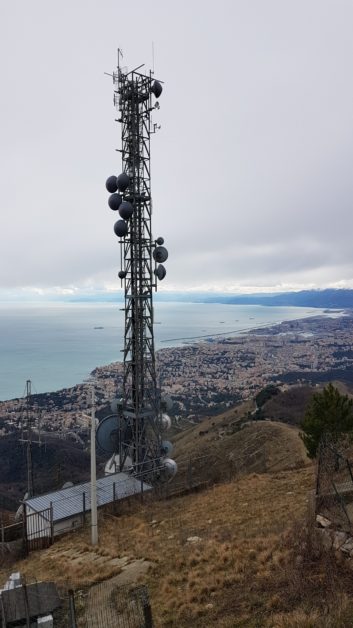
The DAB Italia team tries to locate each transmitter site based on what will provide the best coverage, including rooftops and traditional high broadcast towers in cities, and hilltops to penetrate valleys in rural areas.
Regardless of location, each new site involves extensive planning and theoretical studies. “There are a number of hurdles and constraints in an SFN deployment,” said Wolter. “We have to precisely calculate the delays across each transmitter for the receivers to decode the signals accurately. If the signals are outside a time interval of 246 microseconds, the RF interference contributed by the different transmitters will disrupt reception. Staying within that time interval will both influence and limit site selection.”
The site buildouts are simple by comparison. DAB Italia favors simple antenna systems from Kathrein or Aldena Telecomunicazioni, both of which Wolter says are simple to install and control. DAB antennas are approximately half the size of FM antennas, which makes it easier to place and position the antenna.
The network includes a mix of transmitters from six vendors, some of which are no longer in business. The most recent phases have utilized GatesAir S.r.l. (formerly ONEtastic) and Syes transmitters, both based in Italy (GatesAir S.r.l.’s parent company, GatesAir, is located in the United States). Wolter notes that both companies strike the balance of price, performance, and space-efficiency they are seeking as their network grows.
“Over the last years we have supported these manufacturers in the development of their DAB transmitters with the capabilities we needed to operate correctly our network,” said Wolter. “We worked closely with them on the software development side to access information on system performance. An important recent development is the integration of satellite receivers into the most recent transmitters they shipped. That removes the cost of external receivers. They are active listeners and respond to our requests.”
DAB Italia has deployed 15 GatesAir’s Maxiva transmitters since early 2019 covering a range of power levels and network requirements. “The first GatesAir transmitter we installed provides DAB+ service to the city of Verona, but we also have a number of medium-power transmitters and gap fillers.
Most of these transmitters deliver power levels of 100, 250 or 450 W. But we have gap fillers as low as 25 W, and a few higher power systems that go up to 2.5 kW. All have a 40% efficiency rating, and the higher power transmitters reduce energy use by 15 to 20%.”
The multiplexes come into the transmitter sites from eight radio content providers, using a Factum Radioscape system that takes in signals via IP, satellite and fixed radio links. DAB Italia ingests the various contributed signals into the Factum multiplex, which combines and distributes the signals to the various transmitter sites.
“Our system is really a server farm,” said Wolter. “Audio processing is handled by the content providers, and we manage distribution of the finalized signals. The Factum Radioscape system integrated encoders, which leverage Dolby or Fraunhofer audio codecs. Each has a digital audio interface or AoIP.

“We can adapt a broad range of bitrates based on the quality of the originating signal we receive,” explained Wolter. “We rely on our content providers to appropriately process the audio for DAB, which is quite different compared to processing for FM. DAB offers more bandwidth, which means less processing is required. Too much processing will create a loss in audio quality.”
The majority of DAB Italia’s 19 channels are currently encoded at 48 kbps using HE-AAC+ Version 2 coding. Some are encoded with lower bitrates of 32 kbps, while others leverage higher bitrates of 64 kbps.
[Read: 2020 Looks Good for Digital Radio, Smart Speakers]
“It’s an interesting compromise that still results in exceptional audio quality for the broadcast, provided the source signal is pristine,” said Wolter. “You cannot correct a bad source with higher bit rates; the quality will not improve. The listener will just notice the problems more easily.”
DAB Italia leverages the ETI protocol for contribution and distribution, but is looking at EDI for backup streams. “EDI had just been finalized as we began rolling out the network, and the modulators and transmitters at the time did not support it,” he said. “We are looking to roll out a system that will seamlessly switch between ETI and EDI sources, which gives us the option of having either IP or satellite as the backup.”
The Radioscape system includes an ETI output, and additional equipment then converts the signals to ASI before being sent into a DVB-S2 multiplex. The satellite receivers at each transmission site extract the ETI signal before sending the streams into the transmitters. Where older transmitters without integrated satellite receivers are used, DAB Italia leverages external extractors and receivers from 2wcom.
CAREFUL INVESTMENTS
As DAB Italia works with private radio service providers, they are limited to a certain annual budget. That budget is used to manage the rollout of new sites and maintain the existing network.
“We’re funded by FM revenues, which means we don’t have the budget to roll out 100 to 200 transmitter sites a year in a way that public networks can afford,” said Wolter. “It forces us to make thoughtful investments, and it has provided the opportunity to gain experience in building DAB networks.”
This also means that the network operator needs to use existing resources wisely. Therefore, labor and system maintenance require some very careful planning.
“DAB maintenance is a complex subject in Italy, as a large majority of the existing engineering base is not trained for digital,” said Wolter. “It’s mostly a different generation of technicians that have years of FM experience, but don’t quite understand digital radio. It’s very difficult to convince them to take a laptop to the transmitter site.
“But we have found that most DAB transmitter failures are generic — things such as the power supply, or a software issue. The simplest and easiest way is to change out the transmitter at the site and take it back to the lab.”
Wolter notes that GatesAir has reduced the maintenance burden with more modern and clever designs. “It’s almost like a Lego box, especially with their smaller transmitters,” he said. “They have interlocking parts and no cables. These are compact transmitters with separate amplifiers. It also makes for an interesting tunnel coverage solution, which we are now evaluating.”
Wolter expects to significantly expand the network over the next two years, taking the DAB Italia service to smaller cities, towns and roads, one by one. The most recent GatesAir transmitters recently went on the air in Ferrara and Asti, which represents their expansion strategy into smaller cities.
“We will extend highway coverage further, focusing on areas that are underserved,” he said. “Our second step is to install a local transmitter in every major regional or provincial towns. We ultimately expect to have a network of more than 400 transmitters throughout Italy, and to run it at approximately one-tenth the cost of a comparable FM network.
“Italy is closely interconnected with other European realities and we always keep an eye on new technical developments to keep our system at the highest level of reliability and efficiency,” concluded Wolter.

